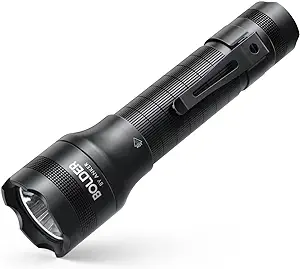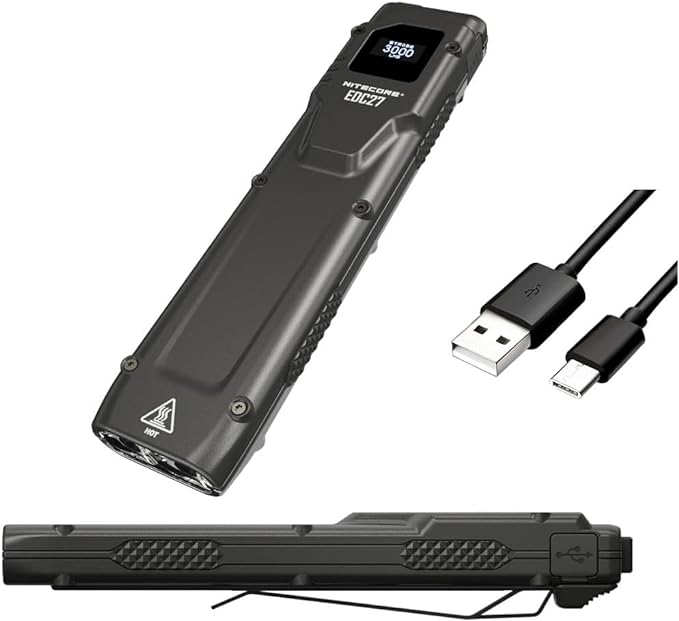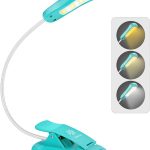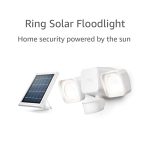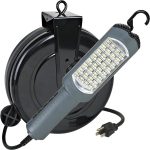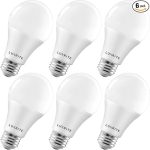As the darkness closes in, you’re left wondering: what’s the best tool to light your way? The answer, much like the flashlight itself, is multifaceted. When it comes to rechargeable flashlights, the options are plentiful, but only a select few stand out from the crowd. In your search for the perfect flashlight, you’re bound to encounter a plethora of choices, each boasting unique features and specifications. But which ones truly shine? Let’s explore the top contenders, from camping lanterns to everyday carry flashlights, and uncover the best rechargeable flashlights that will illuminate your path.
Contents
- Lighting Ever LED Camping Lantern Rechargeable
- Anker Rechargeable Bolder LC40 Flashlight
- OLIGHT S2R II EDC Flashlight
- Nitecore EDC27 Rechargeable Flashlight
- Factors to Consider When Choosing Rechargeable Flashlights
- Frequently Asked Questions
- Can Rechargeable Flashlights Be Used in Extreme Weather Conditions?
- How Do I Properly Store a Rechargeable Flashlight When Not in Use?
- Are Rechargeable Flashlights Suitable for Everyday Carry?
- Can I Use Any USB Charger to Recharge My Flashlight?
- Do Rechargeable Flashlights Have a Shorter Lifespan Than Disposable Ones?
- Conclusion
Lighting Ever LED Camping Lantern Rechargeable
The Lighting Ever LED Camping Lantern Rechargeable is an excellent choice if you’re in the market for a reliable and versatile camping lantern.
It boasts an impressive 500LM maximum brightness and five light modes to suit your needs.
You’ll appreciate the flexibility of the two brightness levels, dimmable white light, and red light with continuous and flashing modes.
Plus, the 2600mAh power bank lets you charge your devices on the go.
With an IPX4 waterproof rating, you can use it in rainy or wet conditions without worrying about damage.
The comfortable carrying handle and two hooks make it easy to take with you on your camping trips.
Best For: Campers, hikers, and outdoor enthusiasts who need a reliable and versatile lantern for their adventures.
Pros:
- Offers multiple light modes, including dimmable white light and red light with continuous and flashing modes, making it suitable for various outdoor activities.
- Features a 2600mAh power bank that allows users to charge their devices on the go.
- Has an IPX4 waterproof rating, making it suitable for use in rainy or wet conditions.
Cons:
- Has a relatively short battery life, with up to 4.5 hours of use in 180-degree mode and up to 2 hours in 360-degree mode.
- May be bulky for backpackers or those who prioritize lightweight gear.
- No specific warranty information is provided, which may be a concern for some users.
Anker Rechargeable Bolder LC40 Flashlight
The Anker Rechargeable Bolder LC40 Flashlight is the best choice for anyone who needs a reliable and long-lasting light source for outdoor adventures or emergency situations.
With its 400-lumen Cree LED and 20-hour runtime, this flashlight provides a reliable light source.
You’ll appreciate the five modes, including High, Medium, Low, Strobe, and SOS, which cater to different needs.
Constructed with a durable aluminum body, this flashlight is IPX5 water-resistant, ensuring it can withstand harsh weather conditions.
The rechargeable 3350mAh battery is convenient, and you’ll get a micro USB cable and a welcome guide to get you started.
With a 4.6-star rating from over 10,000 customers, this flashlight has proven its worth regarding brightness, durability, and overall performance.
Best For: Outdoor enthusiasts, emergency responders, and anyone in need of a reliable and long-lasting light source.
Pros:
- Bright 400-lumen Cree LED with a lifespan of 50,000 hours
- Five modes (High, Medium, Low, Strobe, and SOS) to cater to different needs
- Durable aluminum body with IPX5 water-resistance and rechargeable 3350mAh battery
Cons:
- Brightness affected by battery life
- Lengthy charging time
- No additional features beyond the five modes
OLIGHT S2R II EDC Flashlight
The OLIGHT S2R II EDC Flashlight is a reliable everyday carry option, boasting an impressive 1150-lumen output and a convenient rechargeable battery.
The variable-output side switch serves as a battery indicator, ensuring you’re always aware of your power level.
The flashlight’s premium beam, courtesy of its new TIR lens design, provides excellent illumination.
Its durable aluminum construction and waterproof design make it suitable for harsh environments.
With a compact size and dual-direction pocket clip, you can easily carry it with you wherever you go.
The included accessories, such as the magnetic charging cable, blue and black pocket clips, and more, add to the flashlight’s overall value.
Best For: Outdoor enthusiasts, emergency responders, and individuals who need a reliable and bright flashlight for everyday carry.
Pros:
- Exceptionally bright 1150-lumen output with a premium beam
- Convenient rechargeable battery with a variable-output side switch and battery indicator
- Durable aluminum construction with a waterproof design, making it suitable for harsh environments
Cons:
- Some reviewers found the magnetic charging cable to be thin and proprietary
- One reviewer reported a faulty product, but this was an isolated incident
- No other notable drawbacks mentioned in customer reviews
Nitecore EDC27 Rechargeable Flashlight
The Nitecore EDC27 Rechargeable Flashlight is ideal for those who prioritize maximum brightness, boasting an impressive 3,000-lumen output.
This flashlight is designed to provide exceptional performance, with a beam distance of 209 meters and a maximum beam intensity of 10,672cd.
You’ll appreciate its compact design, weighing only 4.25 ounces and measuring 0.56D x 1.24W x 5.34H.
The Nitecore EDC27 is powered by a single lithium-ion battery, which provides up to 36 hours of runtime.
With an IP54 rating, it’s also resistant to dust and water.
Plus, it comes with a rechargeable battery and a cable, making it a convenient and reliable choice for your lighting needs.
Best For: Those who need a reliable and powerful flashlight for outdoor activities, search and rescue operations, or everyday use.
Pros:
- Exceptionally bright with a 3,000-lumen output and a beam distance of 209 meters
- Compact and lightweight design, weighing only 4.25 ounces
- Rechargeable lithium-ion battery provides up to 36 hours of runtime
Cons:
- No additional features or modes beyond its primary function as a flashlight
- May be too bright for use in close quarters or indoor settings
- No specific mention of durability or ruggedness beyond its IP54 rating
Factors to Consider When Choosing Rechargeable Flashlights
When shopping for a rechargeable flashlight, you’ll want to ponder several key factors that’ll impact your overall satisfaction with your purchase.
You’ll need to think about the light’s power and brightness, as well as how long the battery will last on a single charge.
From there, you’ll want to assess the flashlight’s durability, water resistance, and portability to verify you find the right one for your needs.
Power and Brightness
As you explore the world of rechargeable flashlights, two critical factors to examine are power and brightness, which profoundly impact the flashlight’s overall performance.
When evaluating power and brightness, you’ll want to look at the lumen output, beam distance, and type of LED used.
For instance, the OLIGHT S2R II EDC Flashlight boasts an impressive 1150-lumen output, while the Nitecore EDC27 Rechargeable Flashlight has a beam distance of 209 meters.
The type of LED used can also make a significant difference, as seen in the Anker Rechargeable Bolder LC40 Flashlight, which utilizes a Cree LED to produce high lumens per watt.
You’ll also want to weigh the importance of the color temperature of the flashlight, measured in Kelvin, as it affects the brightness and color tone.
A higher temperature, such as the 6500K SST40 x2 in the Nitecore EDC27 Rechargeable Flashlight, produces a cooler, bluer light.
Additionally, the runtime of the flashlight, measured in hours, is vital, as it determines how long the flashlight will remain bright before needing to be recharged.
Battery Life Matters
One critical aspect to examine when selecting a rechargeable flashlight is its battery life, which substantially impacts the device’s overall functionality and reliability.
You’ll want to weigh how long the device will function on a single charge, as some models offer up to 36 hours of runtime. However, battery life can vary greatly depending on the mode used, with higher modes draining the battery faster.
For instance, the Lighting Ever LED Camping Lantern Rechargeable has a battery life of 4.5 hours in 180-degree mode.
The type of battery used is also essential, as some, like lithium-ion batteries, offer longer lifetimes and faster recharge times.
The Anker Rechargeable Bolder LC40 Flashlight, for example, features a 3350mAh lithium-ion battery.
Additionally, the efficiency of the flashlight’s circuitry and LED can impact battery life.
Some models, like the OLIGHT S2R II EDC Flashlight, boast advanced power management systems to minimize power consumption.
When choosing a rechargeable flashlight, you’ll need to evaluate the trade-off between brightness, beam distance, and battery life to select a model that meets your specific needs and preferences.
Durability and Build
Durability and build quality are critical factors to weigh in your selection of a rechargeable flashlight, as you’ll want to verify it can withstand the rigors of regular use.
A durable flashlight should be made of high-quality materials, such as aluminum, to withstand rough handling and harsh environments.
You can also gauge a flashlight’s build quality by its weight; a heavier flashlight often indicates a more solid build.
When evaluating a flashlight’s build, pay attention to the fit and finish. A smooth and seamless joint indicates a higher level of craftsmanship.
Additionally, consider a flashlight’s ability to withstand drops and impacts. A flashlight that can withstand a 1-meter drop is generally more durable than one that can’t.
Water Resistance Level
When shopping for a rechargeable flashlight, consider the water resistance level, as guaranteeing your light can withstand incidental exposure to water or even immersion, depending on your intended use. You wouldn’t want your flashlight to fail you in the midst of an outdoor adventure or during a critical situation.
The water resistance level is typically measured by the IPX rating system. IPX0 offers no protection, while IPX8 guarantees protection even when submerged beyond 1 meter for up to 30 minutes.
If you plan to use your flashlight near water, such as for fishing or boating, look for an IPX7 or IPX8 rating. For casual outdoor use, an IPX4 rating should suffice, protecting against splashes but not immersion.
Be aware that some flashlights mightn’t have an official IPX rating, but the manufacturer may still claim a certain level of water resistance. Always check the manufacturer’s specifications and reviews to confirm the flashlight can withstand the water exposure you anticipate.
Portability and Design
As you consider a rechargeable flashlight’s water resistance, don’t forget to think about how you’ll be carrying and using it, since a portable and well-designed light can make all the difference in your outdoor adventures.
You’ll want a flashlight that’s compact and lightweight, making it easy to slip into your backpack or pocket. Look for a flashlight with a comfortable grip and a durable design that can withstand rough handling.
Consider the type of activities you’ll be using the flashlight for.
If you’re a hiker or camper, you may prioritize a flashlight with a clip or lanyard hole for easy attachment to your gear. If you’re a homeowner, you might prefer a flashlight with a magnetic base for hands-free use.
Additionally, think about the beam type and adjustability.
A flashlight with a adjustable beam can help you focus light where you need it, while a floodlight can illuminate a wider area.
Charging Options Available
Your next deliberation is the charging options available, which can greatly impact the convenience and reliability of your rechargeable flashlight.
You’ll find that different models offer varying charging methods. For instance, some flashlights, like the Lighting Ever LED Camping Lantern, come with a USB rechargeable feature, allowing you to charge on-the-go.
Others, such as the Anker Rechargeable Bolder LC40, use a micro USB cable for charging, which is easy to store and transport.
Magnetic charging cables, like the one used by the OLIGHT S2R II EDC Flashlight, provide a convenient and easy way to recharge without needing precise alignment.
Additionally, flashlights with rechargeable batteries, like the Nitecore EDC27, often come with a battery indicator, ensuring you’re aware of the battery level and can plan accordingly.
Bear in mind the charging times as well, as they vary between models, such as the 20-hour runtime of the Anker Rechargeable Bolder LC40.
Frequently Asked Questions
Can Rechargeable Flashlights Be Used in Extreme Weather Conditions?
When you’re outdoors, you wonder if your flashlight can withstand harsh weather. The answer is, it depends on the model – some rechargeable flashlights are built for extreme weather, but others may falter in rain or freezing temps.
How Do I Properly Store a Rechargeable Flashlight When Not in Use?
As you stash your trusty flashlight, recall the ancient wisdom of the Spartans: “A warrior’s gear is his life.” Store it in a cool, dry place, away from metal objects, with the battery at 50% charge, and you’ll be ready to illuminate the darkness when duty calls.
Are Rechargeable Flashlights Suitable for Everyday Carry?
You’re wondering if rechargeable flashlights are suitable for everyday carry. Absolutely, they are! They’re compact, lightweight, and energy-efficient, making them a convenient addition to your daily essentials, always ready to shine when you need them.
Can I Use Any USB Charger to Recharge My Flashlight?
You’re wondering if you can use any USB charger to recharge your flashlight. The short answer is no, you shouldn’t; you’ll need a charger that matches your flashlight’s voltage and current requirements to avoid damage.
Do Rechargeable Flashlights Have a Shorter Lifespan Than Disposable Ones?
You think you’re getting off scot-free with a “forever” light, but ironically, rechargeable flashlights can have a shorter lifespan due to battery degradation, making them not-so-indestructible after all – a harsh reality check for your eco-friendly efforts.
Conclusion
You’ve got the power to light up the darkness with these exceptional rechargeable flashlights!
Like a master chef selecting the perfect ingredients, you’ve got to choose the right flashlight that suits your needs.
Whether you’re a camper, an outdoor enthusiast, or just need a reliable light source, these four options shine bright.
From camping lanterns to everyday carry flashlights, each one is a gem in its own right.
Now, go ahead and illuminate your path with confidence!

